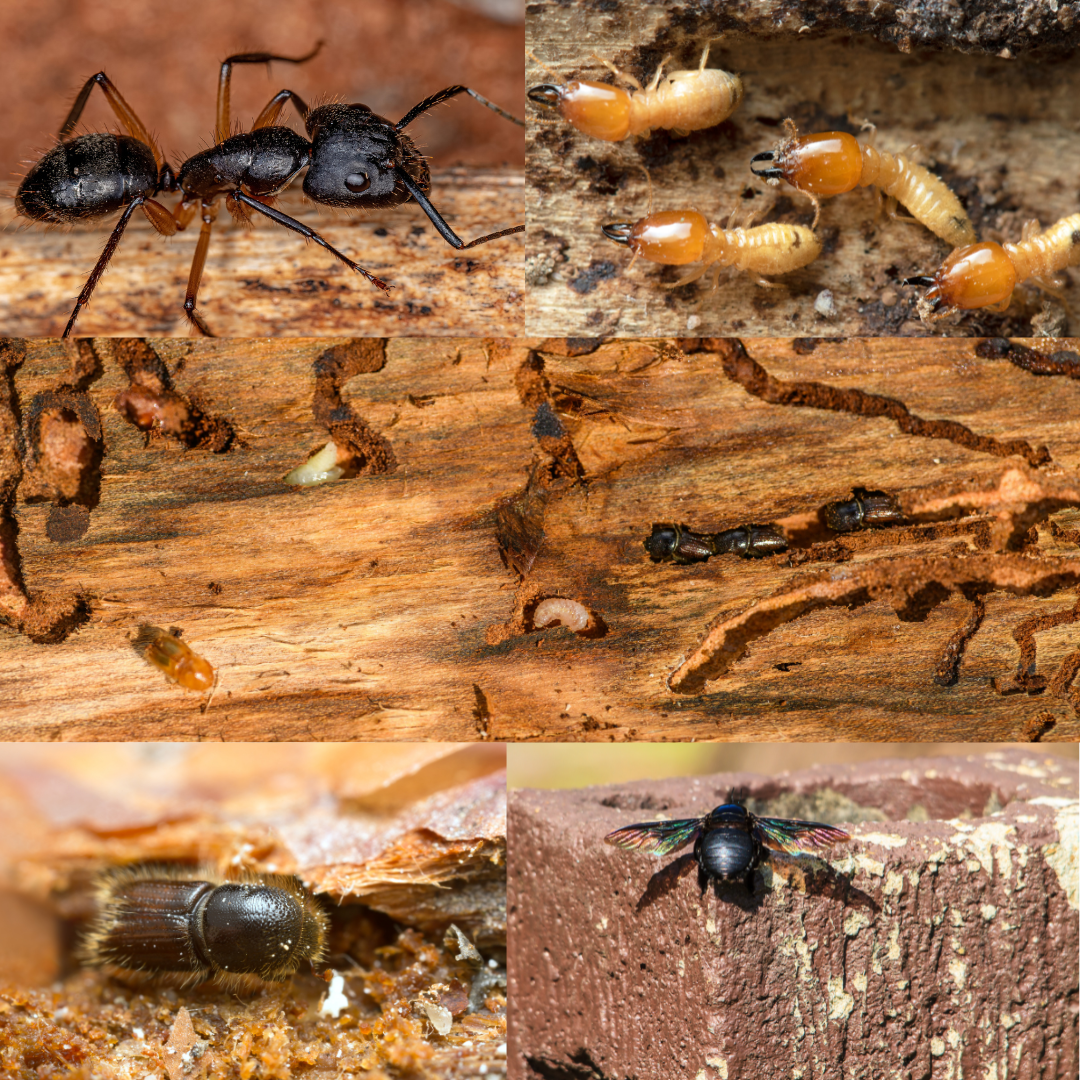Don’t Let Hidden Pests Destroy Your Investment: The Importance of Termite and Wood-Destroying Insect Inspections 🐜🐝🕷️🪳
When it comes to buying or maintaining a home, most people think of obvious issues like roofing, plumbing, or HVAC systems. But one of the most damaging — and often overlooked — threats lies quietly in the wood: termites and other wood-destroying insects.
These pests can silently compromise the structural integrity of a home, leading to costly repairs and safety hazards down the line. That’s why scheduling a professional termite/WDIR (Wood-Destroying Insect Report) inspection is a critical part of the home inspection process.

Common Wood-Destroying Insects to Watch Out For
Here are some of the most common culprits that can cause serious damage if left undetected:
1. Termites
Termites are arguably the most destructive wood-destroying insects. They feed on cellulose found in wood, drywall, and even paper. Often working silently behind walls or under foundations, termites can cause thousands of dollars in damage before you ever see a sign of them. In many areas, termite damage is not covered by homeowners insurance.
2. Powder Post Beetles / Old House Borer Beetles
These small beetles lay their eggs in cracks of wood, and their larvae tunnel through the wood as they grow — leaving behind fine, powdery frass (sawdust). Over time, these tiny invaders can reduce wooden structures to a fragile, honeycombed shell.
3. Carpenter Bees
While they don’t eat wood like termites, carpenter bees bore into wood to create nests, especially in decks, eaves, and fascia boards. Their burrowing weakens structures and invites moisture damage and decay.
4. Carpenter Ants
Carpenter ants don’t eat wood either, but they carve out galleries to nest in it. They typically target damp or decaying wood, which can compound existing moisture problems and compromise the stability of a structure.
Why a Termite/WDIR Inspection Matters
A general home inspection covers a wide range of systems and components, but it typically doesn’t include a detailed inspection for wood-destroying insects. A WDIR inspection specifically targets signs of past or present infestations, including:
-
Mud tubes
-
Exit holes and frass
-
Wood damage patterns
-
Moisture conditions conducive to infestation
Key reasons to schedule a WDIR inspection:
-
🏠 Protect Your Investment: Wood-destroying insect damage can cost thousands to repair. Catching it early can save significant time and money.
-
📋 Satisfy Lending Requirements: Many mortgage lenders require a WDIR report before approving loans.
-
🔍 Uncover Hidden Issues: These pests often work out of sight — a professional inspection can reveal damage not visible to the untrained eye.
-
⚠️ Identify Risk Conditions: Even if no active infestation is present, the inspection can point out conditions that may invite pests in the future.
Peace of Mind Comes from Being Proactive
Whether you’re in the process of buying a home, selling, or just want to ensure your current home is protected, a termite and WDIR inspection is a smart move. Early detection is key to minimizing damage and avoiding expensive repairs.
Don’t wait for the signs to show — by then, the damage may already be done.
Schedule Your WDIR Inspection Today
We offer comprehensive WDIR inspections that provide peace of mind and real answers. Our licensed inspectors know exactly what to look for and how to protect your home from these hidden invaders.
📞 Contact us today to schedule your inspection and protect your property from wood-destroying insects.

Leave a Reply
Want to join the discussion?Feel free to contribute!